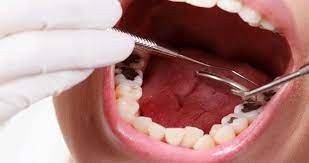Many patients considering the transition to mercury-free dentistry often ask, how safe is the amalgam removal process? Dental amalgam, commonly known as silver fillings, contains around 50% mercury by weight. While it has been used for decades, concerns about mercury exposure have led to growing interest in removing these fillings. When done correctly by trained professionals, Dental Amalgam Removal In Dubai is considered very safe. However, the key lies in using proper safety protocols that protect both the patient and the dental team from mercury vapor and particulate exposure.
Why Safety Matters During Amalgam Removal?
Removing amalgam fillings isn’t as simple as drilling them out like other materials. Mercury is a toxic substance, and improper removal can release vapors or fine particles that are inhaled or ingested. Therefore, patient safety depends on a technique that minimizes risk. The procedure can pose a danger without proper controls. That’s why holistic and biologically-minded dentists follow specific safety guidelines to ensure no mercury exposure during the process. Common concerns include:
- Inhalation of mercury vapor, which can affect the lungs and nervous system
- Ingestion of amalgam fragments, leading to digestive or immune issues
- Environmental contamination, if waste mercury is not properly disposed
- Cumulative mercury exposure, particularly for patients with multiple fillings
When managed with the right safeguards, these risks are greatly reduced and the process is safe for most individuals.
What Is the SMART Protocol?
To address the question of how safe is the amalgam removal process, the International Academy of Oral Medicine and Toxicology (IAOMT) developed the SMART (Safe Mercury Amalgam Removal Technique) protocol. This method is designed to eliminate mercury exposure during the procedure. Dentists who follow SMART take extensive precautions, such as:
- Using rubber dams to isolate the tooth and prevent debris from being swallowed
- Employing high-volume suction and air filtration systems like HEPA and mercury vapor filters
- Providing patients with oxygen through a nasal mask to avoid breathing contaminated air
- Sectioning the amalgam filling into large chunks to minimize drilling and vapor release
- Wearing protective gowns, gloves, and face shields for the dental team
- Utilizing a charcoal or chlorella rinse, often before and after the procedure to support detox
This protocol is widely respected for making the removal process significantly safer and more controlled.
Patient Preparation and Aftercare:
Ensuring a safe amalgam removal process doesn’t stop at the dentist’s office. Patients play an important role before and after the procedure in supporting their body’s ability to manage detoxification. Those with sensitivities or health concerns should discuss preparation plans with their provider. Key patient considerations may include:
- Nutritional support before removal, such as increasing antioxidants and vitamins
- Taking binders like activated charcoal, which may help capture mercury particles
- Staying hydrated to support kidney and liver function
- Resting after the procedure, especially if multiple fillings are removed
- Reporting any unusual symptoms such as dizziness, fatigue, or prolonged sensitivity
When these steps are followed in coordination with professional guidance, the process is generally very well tolerated.
Who Should Consider Extra Precautions?
While Dental Amalgam Removal is safe for most people, some may require additional care. It’s important to evaluate health conditions that could affect how the body responds to trace mercury exposure, even when safety measures are in place. Patients who may need further precautions include:
- Pregnant or breastfeeding women, due to potential effects on the fetus or infant
- Individuals with autoimmune disorders or mercury allergies
- People with heavy metal toxicity or poor detox function
- Those with numerous amalgam fillings, which may require staged removal
- Patients recovering from chronic illness, who may be more sensitive to any toxin exposure
Dentists often work in collaboration with naturopaths or functional medicine practitioners to ensure safe treatment for these individuals.
Final Thoughts on Safety and Results:
So, how safe is the amalgam removal process? When performed correctly, it is considered very safe and often leads to improved oral health and peace of mind. Most patients report feeling no worse after the procedure—and many say they feel better. The long-term benefits of eliminating mercury exposure, combined with the aesthetic improvement of tooth-colored fillings, make it a desirable option for those seeking a more holistic dental approach. Key takeaways for anyone considering removal include:
- Choose a SMART-certified dentist or one with training in safe amalgam techniques
- Prepare your body and immune system to support recovery
- Follow all post-removal recommendations for diet, rest, and supplements
- Monitor your symptoms, and communicate openly with your dental provider
- Trust in modern dental advancements, which make this process more precise and patient-friendly than ever
With the right team and technique, amalgam removal is not only safe—it’s a step toward a healthier, mercury-free future.





Comments